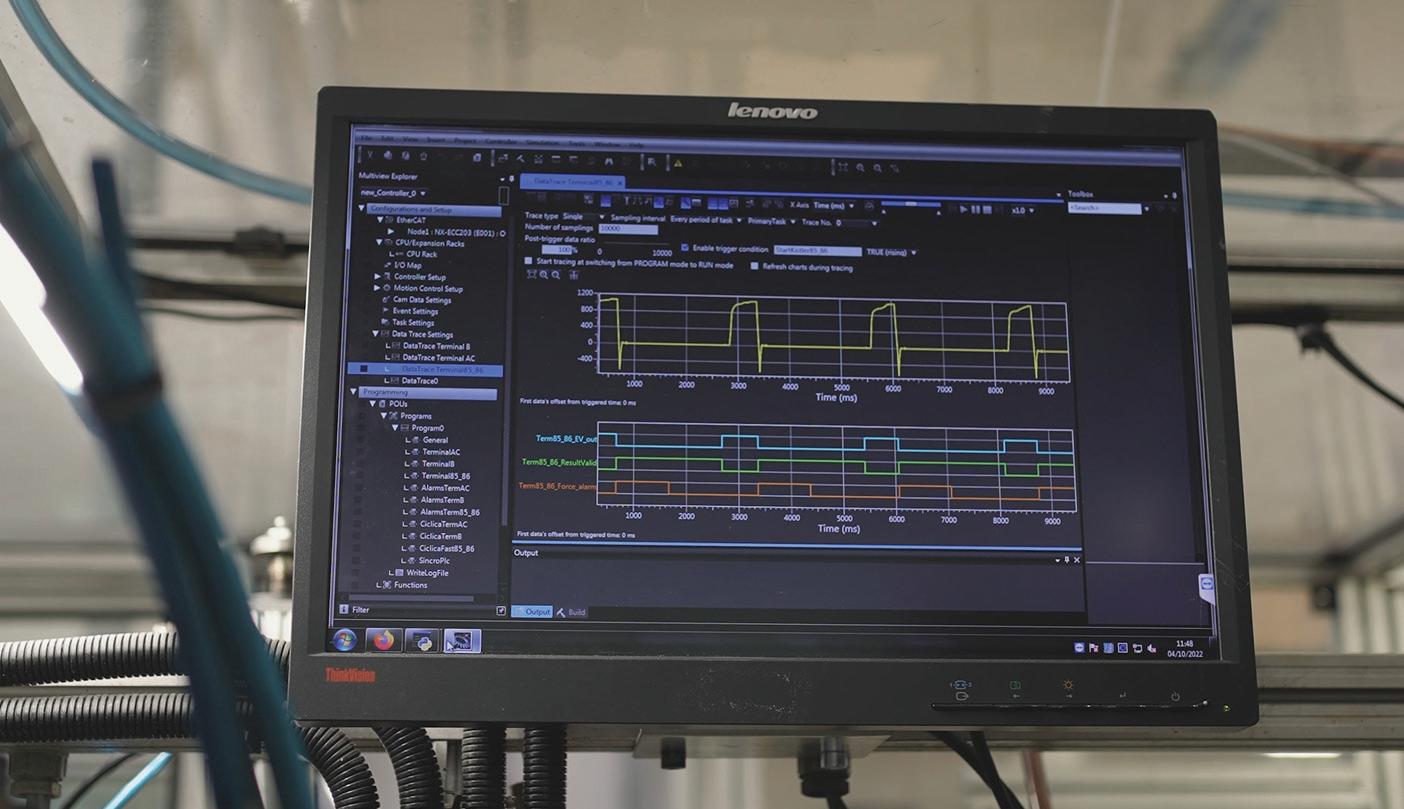
2 minute read
Real-time data monitoring ensures defect-free relays
OMRON Automotive Electronics Italy has upgraded its production line for Power and G8HN relays for the automotive market. The project, led by OMRON’s i-BELT Data Services team, has helped OMRON A.E.I. attain a quality rate of 100% on assembled parts, reducing costs associated with waste and additional checks, with a return on investment achieved after just one year.
The high quality standards demanded in the automotive industry require increased focus on efficiency and process repeatability when selecting the right technologies in the production of components for the industry. This is what led OMRON Automotive Electronics Italy (A.E.I.), a company that produces around 30 million parts for the global automotive market each year, to revise its manufacturing strategies using data analysis as a tool for smart, real-time management of critical process-based defects.
The first step of this strategic overhaul was to upgrade the Power and G8HN relays production line, an initiative supported by i-BELT Data Services, a technology service provided by OMRON’s Industrial Automation Business (IAB) division for everything relating to data acquisition and processing on board the machine.
Measuring the forces at play
The primary objective behind OMRON A.E.I.’s decision to upgrade its relay production line was to stamp out any inefficiencies that could result in batch defects and consequently cause financial losses and increase the risk of faulty parts reaching the customer. With support from OMRON IAB’s i-BELT Data Services, OMRON A.E.I. developed a new qualitycontrol model, which is no longer based on subjective intervention by downstream operators. Instead, the model is built on realtime analysis guided by intelligent systems able to eliminate any human error and faulty parts reaching the customer.
The engineers who worked on the project focused on the mechanical coupling of the plastic and metal components that make up the relays, known as caulking. This is the most critical part of the assembly process and is often the cause of faulty parts being supplied to the customer.
In the past, the qualitative check during this delicate stage of the process used to be performed by the operator, who carried out visual inspections based on statistics outlined in control plans to verify the correct appearance of a given component profile. However, this process didn’t allow for faulty components to be recovered. Instead, if defects were identified, production batches would be quarantined, checked a second time – costing both time and money – and would often then be scrapped.
OMRON A.E.I., therefore, decided to devise and implement a new control system based on measuring the caulking force in real time. The upgrade – made possible thanks to OMRON AI NY controllers and components integrated within existing processes and interfaced with force sensors installed on the line – allowed OMRON A.E.I. to achieve a quality gate of 100% and establish a threshold to enable problems to be frozen as and when they occur. Therefore, in the event of coupling defects, the process stops instantly to allow operators to quickly find the best solution.
A process driven by data
The goal, with help from i-BELT Data Services, was to integrate the OMRON AI controller and the N.Y. controller within the process to achieve the required quality threshold, store data during production and ensure part traceability.
Data analysis proved critical to achieving all the targets set in the preliminary phase. The OMRON i-BELT Data Services team based in the Netherlands gathered every piece of data remotely from the sensors,










